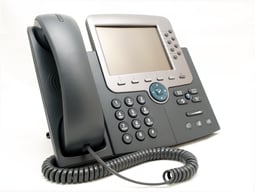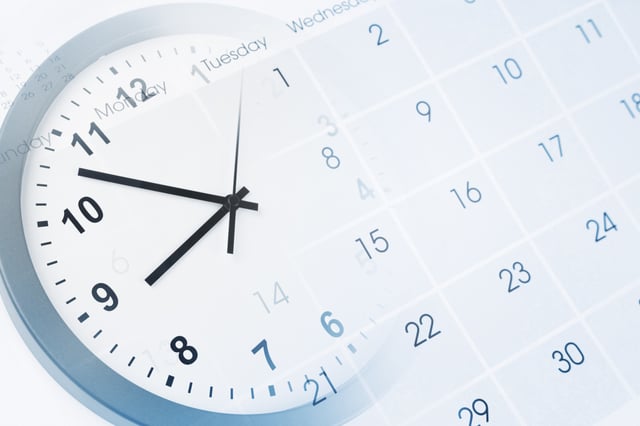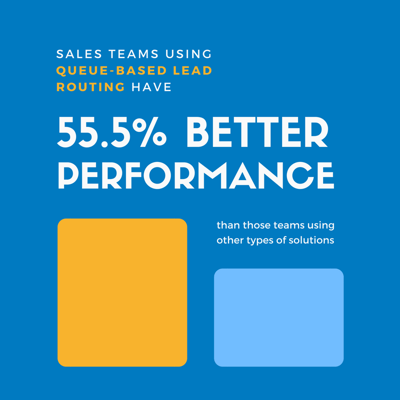
A sales cadence is a choreography of touch points -- emails, phone calls, text, social engagement, and more -- each timed to improve sales engagement and maximize deal flow.
A sales cadence is a powerful tool -- but only when used correctly. Learn more about what works and what doesn't to help you create the right sales cadence for your team.
Once upon a time, the sales game was a solo endeavor. Sales professionals didn't have all the software and Martech tools that are available to sales teams today, and they often worked alone to find prospects, demo products, and close the sale. Salespeople acted as connection points for customers, doling out the relevant product information and explaining the benefits.
 In the past few decades, however, the sales profession has undergone a dramatic transformation, thanks to the ever-increasing spread and speed of technology. AmEx Open Forum writer Julie Rains, in her article "How Sales Has Changed in the Information Age," explains, "Today, buyers can study industry-specific best practices, identify recommended approaches to problem-solving, and begin evaluating possible solutions months before sitting down with a salesperson."
In the past few decades, however, the sales profession has undergone a dramatic transformation, thanks to the ever-increasing spread and speed of technology. AmEx Open Forum writer Julie Rains, in her article "How Sales Has Changed in the Information Age," explains, "Today, buyers can study industry-specific best practices, identify recommended approaches to problem-solving, and begin evaluating possible solutions months before sitting down with a salesperson."
Buyers get to choose where and when to interact with a sales professional; and as a result, selling has become a broad, multi-channel endeavor. To make matters more difficult, today's potential customers have extremely short attention spans. If prospects don't get a response quickly, their off to the next company, the one that will immediately pay attention to his needs. Customers don't like to be cold-called; they want to be the ones to initiate the contact, so sales development representatives (SDRs) have to find new ways to seek out fresh prospects.
In the past, sales workflows consisted of just a few methods of contact—phone, television, print, radio, or face-to-face. Businesses now have to utilize all those methods, plus add in the many different online and tech-related channels, including websites, blogs, email, voicemail, Facebook, Twitter, and a myriad of other social networking or selling platforms. There are just too many touch points to cover.

According to a Bain Insights post on Forbes.com, many companies are spending so much money and time in the areas of sales and marketing that they are failing to see the growth and profit that they should be able to achieve. Over 50% of companies analyzed in a 2013 Bain & Company report showed the symptoms of sales models that are "more complex and less efficient, putting pressure on profit margins." While that Bain report is dated, there is a wealth of more recent findings that illustrate the problem of sales process complexity, such as the CEB finding that in recent years there has been a 26% increase in the size of the average buying group. The sheer complexity of the modern sales workflow is, in fact, killing their sales models— and the problem has only worsened in the past few years.
There's an overwhelming volume of data presented to sales development reps on a daily basis. How are the reps supposed to analyze and interpret it all? Even with the help of well-designed Martech tools, sales reps sometimes get "analysis paralysis." They spend so many hours in planning and then following up with inbound leads that they have little time left to connect with their buyers in a fashion that will be effective: timely responses within minutes, not hours. A sad truth of many sales departments is that they are so busy with other tasks, that their speed-to-lead engagement takes hours (or sometimes days). Leads that take more than 24 hours to follow up with generally have only a 5% response rate, while leads with a tighter 10 minute followup time have upwards of a 38% response rate.
Are your SDRs floundering in a sea of data, desperately trying to cover all the touch points while reaching the right buyers? If so, it's time to implement a truly effective sales engagement strategy— one that eliminates that stress and gives everyone a clear, practical process to follow, with distinct key performance indicators (KPIs) that show you're on the right track.
You feel the frustration every day. You know that there are customers out there, leads to be grabbed and sales to be closed, if you could just figure out how to help your team work more effectively. Take a moment to explore some of the possible underlying reasons for that frustration.
Some of the points that frustrate you the most may involve the lack of predictability in your current sales process. Perhaps it seems that each person on your team responds differently or inconsistently to leads, a problem only compounded by inconsistent messaging, varying response times, and incongruent means of prioritizing leads for follow up. Is there accountability in place for your team members? A way to track sales activity and engagement with customers? If not, your SDRs may be suffering from a lack of motivation or a lack of clearly defined goals.
In his blog post "The Single Biggest Contributor to Predictable Sales Growth," marketing expert Doug Davidoff posits that "the lack of predictability is really just a symptom of complexity and chaos taking root in your organization. In this condition, a company cannot sustain or scale profitable growth." Enacting some controls and tracking methods might spur your sales reps to be more persistent and responsive as they engage with customers.
Persistence
What is persistence in the realm of sales? It's the determination to follow up, regularly, again and again, no matter how much time or effort may be involved. Persistence could look like this: every time someone posts a negative comment on your company's Facebook page, you respond with a kind, conciliatory comment and then email them to resolve the issue. Every time someone fills out the contact form on your website, they receive a personal call, followed by a voice mail and an email if they don't answer the phone. That takes passion and dedication on the part of your team, but you also have to implement systems and enact some accountability to maintain a level of persistence and accuracy, ensuring continuity of the sales process every time, regardless of which representative is working the lead.
Speed to Lead
 Perhaps the most critical element of a successful sales cadence, your team's "speed to lead" is all about the timing of their responses to, or connections with, customers. You can be persistent, but if you've waited too long to make the call or send the email, your persistence will appear more like laziness or a lack of care for potential clients. If you wait 24 hours to respond, you're likely going to engage with only 5% of your leads. Compare that to a 38% engagement rate for responses in less than 10 minutes, and you'll see why speed-to-lead is such a critical component of cadence.
Perhaps the most critical element of a successful sales cadence, your team's "speed to lead" is all about the timing of their responses to, or connections with, customers. You can be persistent, but if you've waited too long to make the call or send the email, your persistence will appear more like laziness or a lack of care for potential clients. If you wait 24 hours to respond, you're likely going to engage with only 5% of your leads. Compare that to a 38% engagement rate for responses in less than 10 minutes, and you'll see why speed-to-lead is such a critical component of cadence.
Respond right away to emails and comments, and be persistent; some of the more successful salespeople utilize upwards of 20 attempts to connect. If someone puts items in their cart while on your website, then abandons the load, email them right away with a conversational note and possibly a discount code.
In an effort to nail the speed-to-lead component of a successful sales cadence, it is important that you look at sales engagement tools which can automate and optimize the speed and persistence with which your sales development reps follow-up with prospects. Marketing automation tools provide some level of automation, but a truly optimized speed-to-lead cadence can only be achieved by a sales engagement platform.
Here's another reason why you feel frustrated with your current sales status. You're pouring time, energy, and money into your team members, your content, and your contact points— but it's like trying to fill a bathtub using a bucket full of holes. The money and time just keep draining away, and there's never enough profit.
According to recent research from WordStream, the average marketing cost to generate a new lead through a Google paid search Adwords campaign can be as high as $135. In fact, cost per new lead for legal services, medical services and employment services are $135, $126 and $105, respectively. While these three industries bear higher-than-normal lead costs, the overall average cost per lead for all industries is $59.18. Each time one of these leads enters your sales process and isn't followed up with promptly, the ROI for these precious marketing dollars are being wasted.

Perhaps your team is struggling to ensure that every lead gets touched, and it just isn't happening. If you're lucky, you have a few stellar sales reps who seem to really have what it takes. They can engage those leads, qualify them, and turn them into customers. Jim Kaufman's theory on "MQL to SQL: Nurturing Your Marketing Qualified Lead for the Sale" seems to come naturally to them.
If only you could clone those sales stars, or imprint their methods and strategies onto your lower-performing team members! So far, you haven't been able to quantify the process that works for your sales stars and make it into a functional formula for the others on the team. You've thought about adding more people to the team, but you're concerned that it won't help, especially because training new reps with the winning ways of your stars is a large hurdle.
If you're feeling these frustrations on a daily or weekly basis, you might be making a few common mistakes in your leadership of the sales development team. Think about how you're managing your people right now, and how you may be able to refocus your leadership efforts in the future.
 Are you letting the sales reps follow up on leads sporadically, based on a "gut feeling" about which prospects might be most valuable or most worth pursuing? Many sales organizations are still using antiquated list-based CRM tools, with limited flexibility and lower potential to manage their sales engagement. With these list-based systems the sales reps are provided an actual list of leads, sometimes in a somewhat pre-filtered manner, that they must then further filter through to identify the most valuable leads. This is problematic in that it adds another step to an already complex sales process, and is prone to human error.
Are you letting the sales reps follow up on leads sporadically, based on a "gut feeling" about which prospects might be most valuable or most worth pursuing? Many sales organizations are still using antiquated list-based CRM tools, with limited flexibility and lower potential to manage their sales engagement. With these list-based systems the sales reps are provided an actual list of leads, sometimes in a somewhat pre-filtered manner, that they must then further filter through to identify the most valuable leads. This is problematic in that it adds another step to an already complex sales process, and is prone to human error.
Instead of leaving lead pursuit to instinct or following a time-consuming list-based approach, explore some more effective options such as queue-based lead routing. With a queue-based lead routing system, much of the decision surrounding which leads should be prioritized is already done for the sales rep. The next-best-lead is intelligently and automatically routed to your agent so that all they have to do is make the call. These systems help your sales team remain focused and nurturing and building relationships that will lead to more closed deals.
What about the words that your reps are using? If they are talking to customers "off the cuff," without guidelines, a template, or a script, they could be driving away valuable leads without even realizing it. According to Jim Kaufman, "If phone calls are part of your nurturing process, make sure your sales development reps and account executives have scripted questions to ask… In this case, they should recognize they’re simply calling to learn more about the prospect and to listen."
The same concept works for other points of contact like emails, Facebook replies, instant messages, and voicemails as well. Before your team members can get creative with their efforts, they need to learn to follow the scripted material.
It's 2018— time to leverage the marketing and sales engagement technology that is poised to make a big impact for your organization. Have you implemented automation as part of your sales process yet? Automation software is an investment up front, but it can save you an immense amount of time, money, and effort in the long run. Automation enables you to have that crucial "speed to lead" when someone makes initial contact with your company.
The thing that you may be lacking, the element that can transform your selling from a struggle to a success, is a purposeful, practical sales cadence.
According to Merriam-Webster.com, the word "cadence" in its original form relates to rhythm— "the rhythm of music, of a person's voice, of sounds in nature." However, the word has recently morphed into a business term as well. In the world of business and sales, cadence refers to "how often a regularly scheduled thing happens."
One of the first recorded usages of "cadence" in this sense occurred at IBM, in 2003, when someone referred to the company's "cadence of meetings." Since then, the term has been adopted into a variety of business settings, including the arena of sales. For sales professionals and team leaders, a "sales cadence" is a series of carefully spaced steps in a planned process.
A sales cadence serves as a path to follow so your reps can nurture leads and turn them into customers. Your SDRs can feel more confident, knowing that they have a sequence of steps to help them achieve sales goals.
What belongs in your sales cadence? The details depend on the product or service you offer and the type of marketing you do. Be sure that you're taking into account the differences and unique challenges in your industry. However, for most sales teams, certain basic elements of connection always belong in the sales engagement process.
 Phone calls are a quick way to get a real-time voice connection with the potential client. Today, everyone carries a phone, nearly all the time; so even if the prospect doesn't answer, you are alerting them to your presence and your concern for their needs. Voicemails then enable you to connect even if the prospect doesn't answer the call. With a sales engagement platform, you can achieve a more consistent message, better response times and greater efficiency with the ability to drop pre-recorded voicemails.
Phone calls are a quick way to get a real-time voice connection with the potential client. Today, everyone carries a phone, nearly all the time; so even if the prospect doesn't answer, you are alerting them to your presence and your concern for their needs. Voicemails then enable you to connect even if the prospect doesn't answer the call. With a sales engagement platform, you can achieve a more consistent message, better response times and greater efficiency with the ability to drop pre-recorded voicemails.
 While text messages need to be used a little more judiciously, if you do have an existing relationship with your sales prospect then reaching out via text may be a well-warranted touchpoint. According to Twilio, "99% of text messages are opened and read within the first 90 seconds of receiving them." Text messages provide not only a higher engagement rate than other channels but also provide a means whereby you can send a clickable link to sales assets that will help close the sale.
While text messages need to be used a little more judiciously, if you do have an existing relationship with your sales prospect then reaching out via text may be a well-warranted touchpoint. According to Twilio, "99% of text messages are opened and read within the first 90 seconds of receiving them." Text messages provide not only a higher engagement rate than other channels but also provide a means whereby you can send a clickable link to sales assets that will help close the sale.
Emails allow the client to read information on their timetable and reply at their convenience. An early email in the sales cadence is typically short, powerful, and helpful, encouraging the contact to ask more questions and get further assistance. Later on in the cadence, there could be lengthier informative emails or brief, personal follow-up emails.
With social media or a website, the connection with the potential client is a bit different. It might be immediate if the contact is still online, in which case you can instant message or live chat as part of the sales cadence, using a script. If the person isn't logged in to the social media service, you can leave a reply to their comment or send them a message that they'll receive later.
 Before you compose the order and timing of your sales cadence, identify the specific elements that you want to use. You'll probably need a couple of different paths depending on the type of initial contact with the prospect. Will you send an email first, then follow up with a call? Perhaps you'll reply to a Facebook comment, then attempt a live chat, and then call to offer more information or resolve a problem. After a couple of days, you might email to follow up and check on customer satisfaction or additional needs. Keep the sales cadence simple at first, then expand and customize it as necessary. Industry studies reveal that 10% of sales are closed after 4 follow-up contacts, while 80% are closed after 5-12 follow-up contacts.
Before you compose the order and timing of your sales cadence, identify the specific elements that you want to use. You'll probably need a couple of different paths depending on the type of initial contact with the prospect. Will you send an email first, then follow up with a call? Perhaps you'll reply to a Facebook comment, then attempt a live chat, and then call to offer more information or resolve a problem. After a couple of days, you might email to follow up and check on customer satisfaction or additional needs. Keep the sales cadence simple at first, then expand and customize it as necessary. Industry studies reveal that 10% of sales are closed after 4 follow-up contacts, while 80% are closed after 5-12 follow-up contacts.
The biggest mistake people make is not making enough contacts, with enough frequency. Remember what we said at the start of this ebook — people self-educate then enter the funnel in the middle, wanting immediate answers and fast decisions. If you don't reach out fast enough or don't engage as many times as it takes to connect, then you'll lose the sale to another vendor solely as a result of your cadence design.
As you design and combine each of these elements, be sure that you're thinking carefully about your buyer's needs. Don't simply focus on your product or service. Instead of emphasizing the hard sell, seek to soothe the buyer's pain. What are his or her pain points? Why has this person contacted your company? Position yourself and your brand as the experts who can solve the prospect's problem.
According to research from the Telfer School of Management at the University of Ottawa, a front-loaded cadence is usually the most effective. This type of cadence offers a strong personal presence right at the beginning, attempting a significant connection with the prospect before moving on to the sales effort. A front-loaded cadence means that you contact the lead more often at the beginning and gradually spread your contact efforts after that so as not to annoy the prospect.
For web leads, the data indicates that it is crucial to make contact with the lead within the first hour after the instance of lead generation. Contrary to a previous 2007 study that indicated you should call within 5 minutes, the Telfer study claims that the best odds for first contact are within 10 minutes after the lead enters the system. Following up promptly is critical to making a successful engagement. In fact, calls within 10 minutes benefit from a 38% engagement rate. If you wait too long, you'll be facing a tougher sell, since the odds of qualifying a recently-generated lead decrease by over 10 times after the first hour.

Let's imagine for a moment that you have a prospect named Kara. Maybe she filled out a form on your company's website with her contact information. Perhaps she responded to a Facebook post, entered a giveaway, or reacted to some other marketing effort— whatever it was, you now have Kara as a lead. What's the best time to contact her?
According to the Telfer research, for Business to Consumer (B2C) companies, the times of day with the best contact ratios are 4 p.m. (26%), 5 p.m. (33%), and 6 p.m. (32%) for the first call. For all call attempts, 5 p.m. and 6 p.m. were the ones with the highest ratios. The hours of 8 and 9 a.m. had a low contact ratio, but for sales personnel who did make contact with the prospect during those hours, the positive results were higher than those for calls at other times. Remind your reps to be aware of issues such as time zone differences when they are calling leads.
The research also reveals that Wednesdays and Thursdays tend to yield higher contact rates. It's not a good idea to keep a client waiting just so you can speak to him or her on a high-contact day; but if you're having trouble reaching the person, make another attempt on Wednesday or Thursday.
Depending on your business model, your sales rep might send Kara a personalized templated email, maybe with a special offer or an invitation to respond if she has questions. Or the rep might make a phone call to Kara, to find out what she needs and how your business can better serve her. You could also connect with Kara via instant messaging or chat through your website or Facebook page, depending on how she contacted you in the first place.
Despite your best efforts, too many leads will slip through the cracks due to non-optimal, list-based CRM systems. Instead of depending on your reps to filter through a list of leads and follow up on their own, implement an automated, queue-based system. You'll see that these queue-based, sales engagement platforms, are better suited to managing the optimal sales cadence. With the help of your sales development reps or appointment setters, these sales engagement systems will hand more qualified leads over to the sales executives who will work the opportunity to close. These better-optimized sales engagement systems will eliminate the noise and issues arising from slow follow-up times.
With traditional CRM systems, leads are placed into a list and the sales development representative is responsible for sifting through (and often cherry picking) the leads they want to follow-up with. They often spend so much time doing this sifting that they are only able to make a dozen or so calls a day.
 Automatic lead assignment and follow-up is one of the primary benefits of a queue-based sales engagement platform. Instead of your agents wasting precious hours each day sifting through leads, the system intelligently auto-assigns a new lead, after the previous lead is dispositioned. Depending on your business needs and sales process, you can even choose to have the sales engagement platform auto-dial the next lead once the assignment happens.
Automatic lead assignment and follow-up is one of the primary benefits of a queue-based sales engagement platform. Instead of your agents wasting precious hours each day sifting through leads, the system intelligently auto-assigns a new lead, after the previous lead is dispositioned. Depending on your business needs and sales process, you can even choose to have the sales engagement platform auto-dial the next lead once the assignment happens.
With this more automated approach, there is no chance for your agent to neglect certain leads, overthink the call, or become distracted by other aspects of the sales process. They are kept on target and are able to deliver hundreds of calls a day instead of dozens. Your SDRs will have the best possible chance of reaching every lead within minutes after the lead's arrival in your system.
To make the process move even faster, use a smart dialing system so your reps don't have to type in the numbers for every phone call they make. When evaluating smart dialing systems you should be looking for one of two approaches: preview or progressive auto dialing. With preview dialing, the agent will see a preview of the prospects account and will manually click a button or icon on the screen, located adjacent to the lead's phone number, once they are ready to start the call. With progressive dialing, the lead will automatically appear on the screen after the previous call is dispositioned and the number is auto-dialed.
Provide clear yet flexible phone scripts that the reps can quickly move through during a call, so they don't make a verbal misstep and lose the sale because of it. The best sales engagement systems will even include the ability to create a library of scripts, with relevant branching, so that the sales development rep merely needs to follow the playbook. A library of branching scripts ensures your reps are communicating an effective and consistent message, and they ensure your reps are optimizing their time on the phone.
If the prospect doesn't answer the phone, pre-recorded voice drops can save your reps precious minutes, allowing them to leave an appropriate pre-recorded message quickly and move on to the next lead.
Does your limited staff of SDRs have to handle each email lead personally? Instead, experiment with creating a library of email templates that your reps can quickly personalize and send to the contact. It saves time, optimizes the sales cadence, ensures a consistent message, and maximizes your team's chances of reaching all leads during the target window.
Choose a platform that also includes a public calendar application, so your reps can quickly create appointments with their contacts as needed.
As successful business leaders know, providing your team with tools that are easy to use and benefit from high adoption rates is imperative when introducing new software. Be sure to choose a sales engagement platform that contains email, calendaring and dialing all from within a single-user interface. Having everything in one spot eliminates the need for ALT-tabbing between windows— no more lost seconds that could be devoted to the next lead.
Not only will this increase the productivity of your salespeople, it will also ensure user adoption rates are high and the time it takes to get your team trained and rolling is kept to a minimum.
 An in-depth study of inside sales and sales engagement revealed that sales teams using queue-based lead routing have 55.5% better performance than those who use another type of system. Sales reps called faster and more persistently, and productivity increased dramatically once the queue-based sales engagement system was in place.
An in-depth study of inside sales and sales engagement revealed that sales teams using queue-based lead routing have 55.5% better performance than those who use another type of system. Sales reps called faster and more persistently, and productivity increased dramatically once the queue-based sales engagement system was in place.
As stated in the report, call productivity doesn't necessarily correlate with the number of calls made in a specified period of time. A truly productive sales rep may have fewer calls per hour than another but may make more connections or qualify more leads or close more sales overall. This study shows that with a well-designed sales engagement system, a rep's competency and performance improves and yields higher-quality results.
Persistence and true productivity are closely connected, and the study authors found that the effort devoted to follow-up calls was linked to overall sales success. The average number of calls it takes to reach a prospect is 5-6, so encourage your sales reps not to give up too soon. According to the report, "when salespeople fit their sales approach to meet the specific needs of a lead, they increase the likelihood of closing a sale, while building an effective relationship with the lead."
In 2016, TOPO released its 2016 Sales Development Benchmark Report that includes helpful data for sales teams. It spans more than 150 sales development organizations, with an emphasis on discerning the differences that make some sales development teams more successful.
According to the report, the average sales development representative generates about 18.2 qualified leads every month. At the same time, using automated processes, sales reps are creating and enacting multi-touch, multi-channel campaigns, resulting in 15 or more touches per prospect with three or more channels involved, on average, within a relatively short period of time. The benchmark for close rates on sales development-generated opportunities is 22%.
Where does your sales team stand in reference to those numbers? Are you able to execute those necessary high-volume, high-impact touches for your prospects? Estimate what percentage of incoming leads you are currently able to cover, and determine your current contact ratios as well as sales and closing rates. With the benefit of a queue-based sales engagement solution, your team's percentages would increase substantially.
How can you take your fresh perspective on sales cadence and turn it into dynamic power for your sales team? With the right sales engagement tools, you can create your business's personalized sales cadence— one that ensures that no lead goes untouched and that every effort is worthwhile, bringing you one step closer to gaining another customer.
VanillaSoft's Sales Engagement platform provides you and your SDRs with the tools you need to set up an effective queue-based system and sales cadence. You'll be able to boost your sales team's productivity and take more leads from the point of contact to the point of sale. With automated workflows, queue-based technology, and tools that improve your speed to lead, you should see much faster conversions.
VanillaSoft offers a free trial of its services for six users, for 14 days or up to 2,000 calls. That's plenty of time to check it out and discover how this platform can change the way you close leads. Don't stay frustrated when there are tools that can improve your sales team's ROI and help you meet your sales goals. Begin your free trial of VanillaSoft today, or contact us to request a live, personalized demo of the platform.
Want to hear what other sales professionals have to say when it comes to sales cadence? Watch our webinar recording to learn more.
I am extremely impressed with how easy it was to get started and train my marketers on the VanillaSoft solution. As well, I had a lot of flexibility on how I wanted this program to run for our company. Plus, customer service is EXCELLENT at VanillaSoft. I highly recommend VanillaSoft to anyone!

Jody Weinberg J Telecommunications
We have never been so successful. Since we started using VanillaSoft we have increased productivity by 175%! Also, working with the VanillaSoft team has been an incredible experience. They helped us customized our campaigns and page layout to fit our unique needs.

Lauren E. Siegel Hillel Michigan